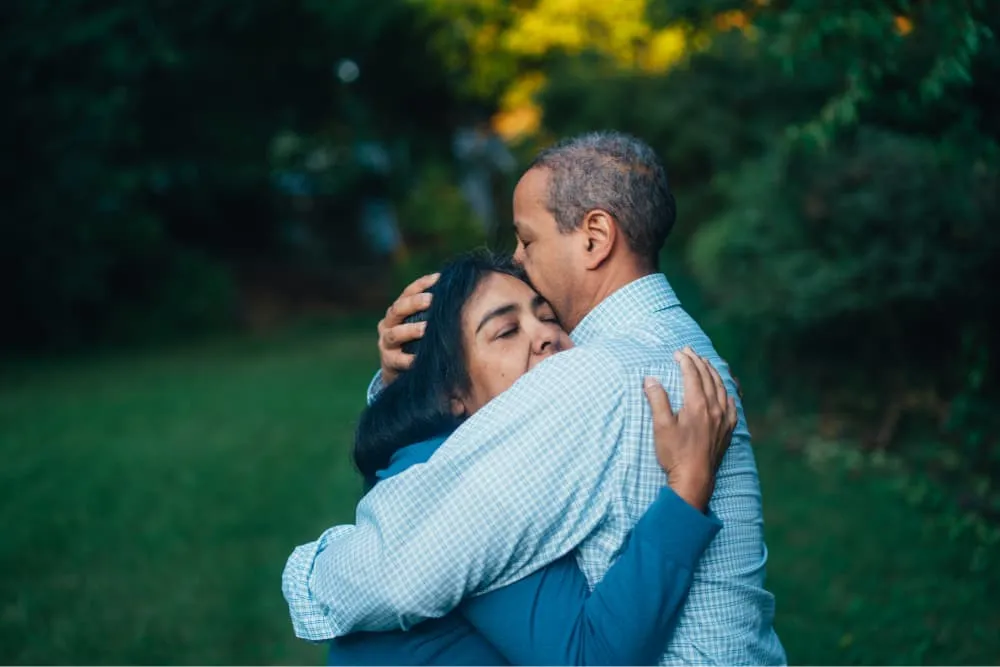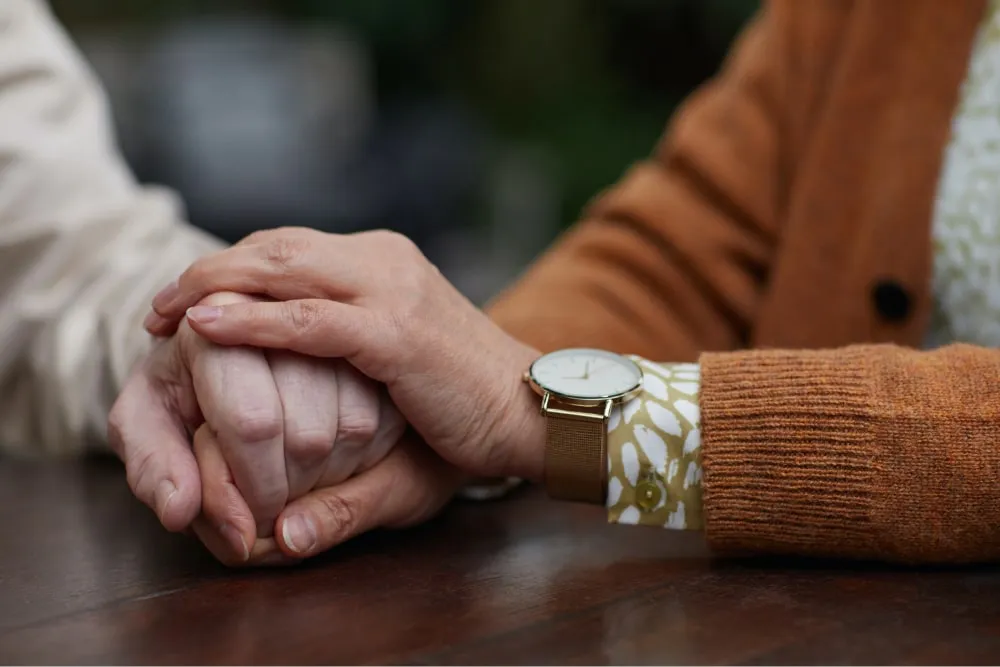What is exposure therapy?
Exposure therapy is an evidence-based treatment modality used to treat phobias, fears, and anxieties. When someone is terrified of something, they tend to avoid their fear, whether it’s a situation, behavior, person, or object. Avoiding their fear can help reduce anxiety symptoms in the short term, but in the long run, the phobia magnifies.1
Exposure therapy breaks the cycle of fear and avoidance by gradually and safely exposing the patient to their phobia in a controlled, monitored setting. The idea is that slowly, over time, exposure can decrease feelings of anxiety and fear, thus reducing avoidance.1
Exposure therapy can help eating disorder patients in a few ways, including:1
- Self-efficacy: Exposure to fear foods or skipping eating disorder rituals can prove to the patient that they are capable of confronting their phobias and dealing with the anxiety.
- Emotional processing: Eating disorder patients can learn to tolerate fear and anxiety better and replace unhelpful thought patterns with more realistic, healthy beliefs related to the fear.
- Habituation: Gradually, exposure can reduce anxiety and fear reactions to feared stimuli.
- Extinction: Exposure can break the learned associations between phobias and negative outcomes over time.
What does exposure therapy entail?
Many people with eating disorders have extreme fears related to their disordered eating behaviors, whether it be eating a certain amount, eating a particular food, looking in the mirror, or avoiding a behavior like compulsive exercise. Exposure therapy for eating disorders involves confronting their fears and incorporating them into the patient’s everyday life under the guidance of a therapist or psychologist.
Exposure therapy for eating disorders like anorexia nervosa, bulimia nervosa, avoidant restrictive food intake disorder (ARFID), and binge eating disorder involves exposing patients to their fear, which may initially cause a spike in anxiety as they begin to face their fears. Still, over time, the patient will typically adapt to the feared situation and experience a reduction in anxiety.
Moreover, exposure therapy can help eating disorder patients develop new associations between their fears and outcomes. After exposure to their fear, they may learn that the outcome is not what they had expected. Developing tools to safely manage if the feared outcome does occur can also be part of this process.2
Remote eating disorder treatment
At Within Health, we tailor our treatment plans to meet the unique needs and challenges of each patient, and that includes creating thoughtful and individual exposures to support our patients.

Support around exposures to new or feared foods

Personalized meal delivery

Insurance options

Dedicated care team
Movement group therapy
Our movement groups are also exposure therapy groups. Some eating disorder patients are afraid of moving their bodies or exercising because this brings about awareness of their bodies. Exposure work may involve doing small increments of movements if nutritional intake is appropriate. We also individualize this movement exposure by finding movement that brings our patients joy or involves something they’d like to learn, such as dance.
Alternatively, some movement exposure groups may involve the cessation of movement. This is typically for patients with a history of compulsive exercise or exercise addiction. For example, if a patient typically engages in a rigid exercise regime, they may be asked to take more rest days or change the duration and intensity of their workouts, which can ultimately help them to overcome their fear of not exercising.
Is virtual eating disorder treatment right for you?
Learn more > Eating disorders treated with exposure therapy
Exposure therapy may be used to treat many different eating disorders, including:2
Additionally, exposure therapy may be used to treat eating disorder patients with co-occurring mental health conditions.1
Exposure therapy for anxiety
Anxiety is closely tied to a number of eating disorders, with as many as two-thirds of eating disorder patients reporting a co-occurring anxiety disorder of some sort in one study.4
But exposure therapy can be an effective tool for helping with generalized anxiety, particularly forms of the treatment that involve visualizing a feared object or scenario, or actually facing these objects or scenarios in real life.
For those with co-occurring eating disorders, this could involve situations connected to food, eating, or body image that can lead to anxiety or trigger unhelpful behaviors.
Exposure therapy for OCD
Obsessive-compulsive disorder (OCD) is a specific anxiety disorder that also frequently co-occurs with eating disorders, particularly anorexia nervosa.4
Exposure and response prevention (ERP), a type of exposure therapy that incorporates “homework” along with therapy sessions, was found to effectively help those struggling with OCD.
Exposure therapy for PTSD
A history of trauma is a very common experience for people with eating disorders, with many patients also meeting the criteria for post-traumatic stress disorder (PTSD).
Exposure therapy can be used in these cases to help reduce feelings of anxiety and fear around certain scenarios, and help reduce avoidant behaviors, which could lead to subsequent issues.
Exposure therapy for social anxiety
Social anxiety is a specific type of anxiety disorder that manifests as extreme fear, self-consciousness, embarrassment, or anxiety caused by social interactions. When co-occurring with an eating disorder, it can be tied to situations that involve food and eating or scenarios that draw attention to someone’s appearance.
Once again, exposure therapy has been found to help in these cases, particularly in vivo exposure therapy, which involves directly facing a feared situation or object in real life.4
Exposure therapy for phobias
Exposure therapy is perhaps most frequently thought of as a technique for dealing with phobias. When helping those with panic disorder, which is often triggered by phobias, forms of exposure therapy that involve a trained professional intentionally initiating feared sensations have been found to be effective.6
Exposure therapy for phobias may also be helpful for people with co-occurring eating disorders, particularly those that involve phobias of certain food colors or textures, which they can be intentionally exposed to.
How effective is exposure therapy?
There is some evidence that exposure therapy for eating disorders can help reduce anxiety and improve disordered eating symptoms, but large randomized controlled trials isolating exposure therapy from other modalities, such as cognitive behavioral therapy or interpersonal psychotherapy, have yet to be conducted.3
Research indicates that mirror exposure on its own or within the context of CBT can increase body satisfaction. It has also been shown to help reduce a patient’s response to binge and purge cues. Direct exposure to feared foods has been shown to increase food intake and reduce anxiety, but more research is needed.3
Remote treatment by Within Health
Whether your treatment program officially refers to it as exposure therapy or not, eating disorder treatment often inherently involves exposure to things that patients are fearful of, such as eating certain foods, moving or not moving their bodies, refraining from purging behaviors, looking in the mirror, and coping with body changes.
A crucial part of eating disorder treatment is facing these fears in a trusted, safe environment under the care of treatment professionals. Confronting these fears can reduce avoidant behaviors in the future and, ultimately, allow individuals to recover from their eating disorders and live healthier and happier lives.
Call (866) 293-0041 to learn more Where can you receive exposure therapy for eating disorders?
Many different eating disorder treatment settings integrate exposure therapy into their treatment plans, such as:














